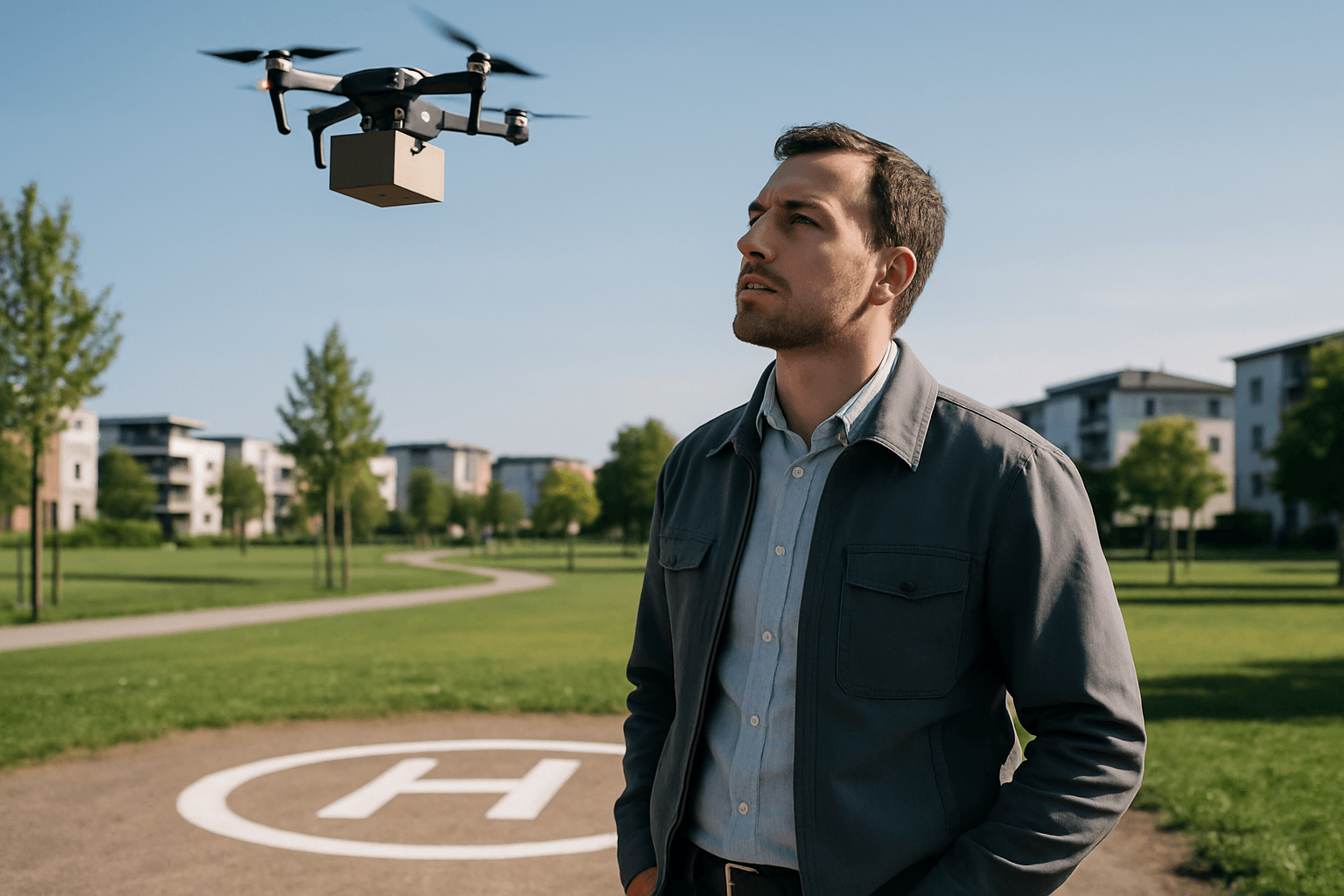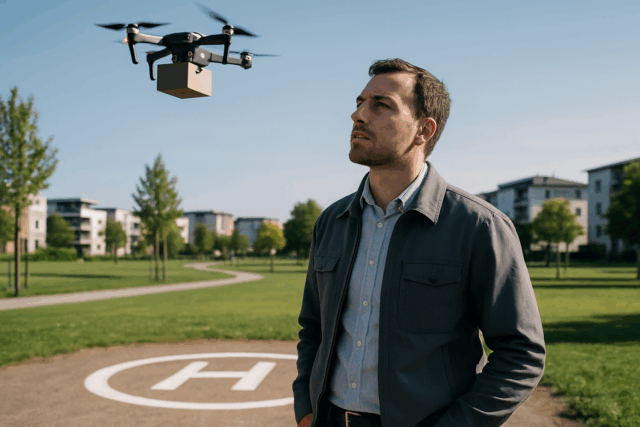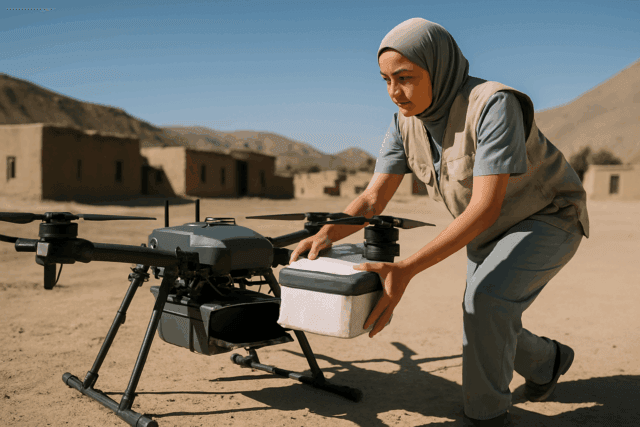The skies are gradually becoming a new frontier for commerce, with autonomous drones promising to revolutionize package delivery. While the vision of rapid, efficient, and environmentally friendly deliveries is compelling, a paramount concern for both regulators and the public remains: how do these unmanned aerial vehicles (UAVs) ensure the safety of people on the ground? The answer lies in a sophisticated interplay of cutting-edge technology, stringent regulatory frameworks, and meticulous operational protocols designed to mitigate risks at every stage of a delivery flight.
A Robust Regulatory Framework
The foundation of drone safety begins with comprehensive regulations and a structured air traffic management system. Governing bodies worldwide are actively developing rules to safely integrate drones into existing airspace.
Evolving FAA Standards and Certifications
In the United States, the Federal Aviation Administration (FAA) plays a crucial role in establishing safety guidelines. Current commercial drone operations often fall under Part 107 of the Federal Aviation Regulations, which includes requirements for remote pilot certification, drone registration, and operational limitations such as maintaining visual line of sight and altitude restrictions. For more complex operations, such as autonomous last-mile delivery, companies often seek Part 135 air carrier certification, a more rigorous process designed for on-demand air transportation.
Recognizing the need for scalability, the FAA is continuously evolving its approach, introducing new rules and waivers to accommodate beyond visual line of sight (BVLOS) operations, which are critical for widespread drone delivery. These proposed changes aim to create a more straightforward pathway for regulatory approval, focusing on performance-based standards.
Unmanned Aircraft System Traffic Management (UTM)
To manage the increasing density of drone traffic, particularly at low altitudes, the concept of Unmanned Aircraft System Traffic Management (UTM) has emerged. UTM is a collaborative ecosystem designed to manage drone operations safely and efficiently, complementing traditional air traffic control systems built for manned aircraft.
Key components of UTM include:
- Registration and Identification: Assigning unique identifiers to all drones for effective tracking and management.
- Real-time Tracking: Continuously monitoring drone positions and flight paths to prevent collisions.
- Geo-fencing: Establishing virtual boundaries to designate no-fly zones, restricted areas, and specific corridors for drone flights, protecting sensitive locations and populated areas.
- Automated Conflict Resolution: Systems designed to autonomously adjust flight paths when multiple drones converge in the same airspace, ensuring safe separation.
- Integration with Air Traffic Management: Seamless coordination with existing air traffic systems to ensure the safe coexistence of manned and unmanned aircraft.
Advanced Onboard Technologies for Safety
Modern delivery drones are equipped with sophisticated hardware and software that enable them to operate safely and autonomously.
Sense-and-Avoid (SAA) Systems and Collision Avoidance
One of the most critical safety features is the Sense-and-Avoid (SAA) system, also known as Detect and Avoid (DAA). These systems empower drones to actively perceive their surroundings, analyze potential threats, and make real-time decisions to prevent collisions.
SAA systems typically integrate a combination of sensors:
- Cameras and Computer Vision: Allow drones to “see” and understand their environment, detecting objects like buildings, trees, other aircraft, and even birds.
- Radar, Lidar, and Sonar: Provide spatial awareness, enabling drones to measure distances and detect obstacles in various conditions.
- Intelligent Algorithms: Process data from these sensors instantaneously to adjust the drone’s trajectory, speed, or even initiate a complete halt to avoid a collision. This capability is essential for operating in complex, low-altitude environments, dynamically rerouting to avoid unexpected obstacles such as cranes, construction zones, or power lines near drop-off points.
Redundancy and Fail-Safe Mechanisms
To address the possibility of component failure, drone manufacturers incorporate redundancy into critical systems. This means that if one component, such as a motor or battery system, fails, a backup system is in place to maintain the drone’s functionality, preventing catastrophic failures.
Furthermore, drones are programmed with “fail-safe logic” to handle emergencies autonomously. These pre-configured actions include:
- Low Battery Protocols: If the battery level drops critically, the drone can automatically initiate a return to its takeoff point or perform a controlled landing at the nearest safe location.
- Loss of Communication Link: In case of signal interruption, a drone can be programmed to increase altitude to re-establish connection, return to home, or execute an emergency landing procedure.
- Obstruction Detection during Delivery: Advanced systems can detect obstructions in the drop-off zone (e.g., a person or animal) and abort the delivery, returning with the package rather than attempting an unsafe drop.
Weather Resilience and Environmental Awareness
Adverse weather conditions pose a significant threat to drone operations. Delivery drones are increasingly equipped with systems for real-time weather monitoring and adaptability. They are designed to withstand and operate safely within defined ranges of wind, rain, and other environmental factors. Landing zones, for instance, must be designed to mitigate the impact of precipitation or wind, ensuring both safe landing and package protection.
Meticulous Operational Protocols
Beyond regulations and technology, the human element in drone delivery focuses on rigorous planning and monitoring.
Pre-flight Planning and Geo-fencing
Before any flight, comprehensive pre-flight inspections and route planning are conducted. This includes:
- Route Optimization: Planning flight paths that avoid densely populated areas and potential hazards.
- Hazard Identification: Identifying and mapping safe emergency landing zones along planned delivery routes, allowing the drone to autonomously land at the nearest safe location if needed.
- Airspace Restrictions: Adhering to airspace restrictions and obtaining necessary authorizations, especially for flights in controlled airspace.
Real-time Monitoring and Emergency Procedures
Even with advanced autonomy, human operators often monitor flights, with the ability to intervene if necessary. Companies typically have 24-hour emergency response plans for accident scenarios. Real-time data exchange with UTM systems provides continuous situational awareness to both automated systems and human supervisors.
Parachute Recovery Systems
As a last line of defense, many delivery drones are equipped with parachute recovery systems. These systems are engineered to deploy a canopy safely in the event of a system failure, such as sudden power loss or mechanical malfunction. This ensures a controlled descent, minimizing risks to people and property on the ground, and preserving the drone and its payload. Modern systems can monitor real-time indicators and automatically trigger deployment without pilot input.
Building Public Trust through Transparency and Education
While technological and regulatory safeguards are robust, public perception remains a critical factor in the widespread adoption of drone delivery. Concerns about safety, privacy, and potential mishaps are common.
Addressing Concerns and Demonstrating Reliability
Drone delivery companies are actively working to address these concerns through:
- Transparency: Openly communicating safety measures and privacy regulations to the public.
- Rigorous Testing: Conducting extensive test flights to push drones to their limits in safe environments, identifying and fixing potential issues.
- Education: Informing communities about drone operations and the benefits, as studies show that exposure to information about drone delivery correlates with greater interest and more positive perception.
Conclusion
The safety of people on the ground during drone delivery is not a singular challenge but a complex, multi-faceted engineering and regulatory endeavor. Through the continuous advancement of sense-and-avoid technologies, the implementation of robust redundancy and fail-safe systems, meticulous operational planning, and the development of comprehensive Unmanned Aircraft System Traffic Management (UTM) frameworks, the drone industry is steadily building a safe and reliable future for aerial logistics. As these systems mature and public understanding grows, drone delivery is poised to become an increasingly secure and integrated part of daily life.





